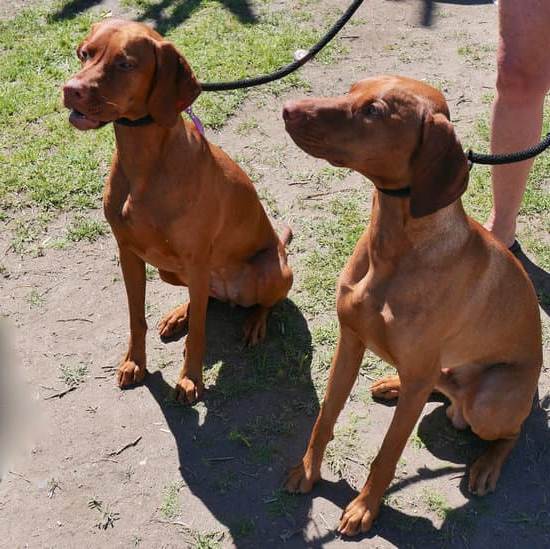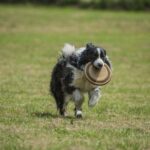Is your furry friend constantly showering you with licks and kisses? While it may be an adorable display of affection for some, excessive licking can become bothersome for many pet owners. In this article, we will explore the reasons behind this behavior and provide you with effective methods to train your dog to stop licking you.
Many dog owners have experienced the seemingly endless licks from their pets, leaving them wondering why dogs engage in this behavior. Understanding the underlying reasons behind this behavior is essential in effectively addressing and modifying it. By delving into the motivations behind your dog’s licking tendencies, you can develop a comprehensive approach to training that is tailored to your pet’s specific needs.
Setting boundaries with your furry companion is crucial in establishing rules for acceptable behavior. Encouraging positive habits while discouraging unwanted behaviors requires consistent training and patience.
In the following sections, we will discuss various techniques such as positive reinforcement, redirecting attention, and understanding body language to help you effectively train your dog to stop licking you. With dedication and a good understanding of your pet’s needs, you can successfully address this common issue and strengthen the bond between you and your furry friend.
Setting Boundaries
Establishing Clear Communication
When it comes to setting boundaries for your dog’s licking behavior, clear communication is key. Dogs thrive on consistency, so it’s important to establish clear rules and boundaries from the start. This means setting limits on when licking is acceptable and when it’s not. Consistency in enforcing these boundaries will help your dog understand what behavior is expected of them.
Creating a No-Lick Zone
One effective way to establish rules for licking is to create a “no-lick zone” in your home. This could be certain areas such as the couch or bed where you don’t want your dog to engage in licking behavior. By consistently redirecting your dog away from these areas whenever they attempt to lick, they will start to learn that certain spaces are off-limits for this behavior.
Setting Boundaries With Guests
It’s also important to set boundaries for your dog’s licking behavior when guests are around. Not all people enjoy being licked by dogs, so it’s essential to train your dog to respect the personal space of others. Creating a rule that your dog should only greet guests once they have calmed down and stopped licking can help prevent unwanted behavior when visitors come over.
By implementing clear rules and boundaries for licking, and communicating them consistently, you can effectively train your dog to stop this behavior.
Overall, setting boundaries for your dog’s licking behavior involves clear communication, creating no-lick zones, and establishing rules for interactions with guests. These measures combined with positive reinforcement will help in effectively training your dog to stop excessive licking.
Positive Reinforcement
Understanding the concept of positive reinforcement is crucial when training your dog to stop licking you. Positive reinforcement involves rewarding your dog for exhibiting the desired behavior, in this case, not licking you. When your dog refrains from licking you, it’s essential to immediately praise them and offer a treat as a reward. Over time, this will help your dog associate not licking with positive outcomes.
It’s important to select treats that are particularly appealing to your dog and only use them for training purposes. This creates a stronger incentive for your dog to obey the no-licking rule. Additionally, verbal praise in the form of a happy tone and enthusiastic words can further reinforce the message that not licking is desirable behavior.
Consistency is key when using positive reinforcement to discourage licking behavior in dogs. Be sure to reward and praise your dog every time they refrain from licking across various situations and environments. By doing so, you’ll communicate clearly to your pet what behavior is acceptable and what will result in positive consequences.
| Positive Reinforcement Strategies | Description |
|---|---|
| Selecting high-value treats | Choose treats that are highly appealing to your dog and reserve them exclusively for training purposes. |
| Consistent praise and rewards | Offer verbal praise along with physical rewards every time your dog refrains from licking as part of a consistent routine. |
Redirecting Attention
When it comes to training your dog to stop licking you, it’s important to provide alternative activities that can redirect their attention away from licking. By offering stimulating and engaging activities, you can help discourage the licking behavior while still keeping your dog entertained and happy.
Here are some alternative activities you can try to redirect your dog’s attention away from licking:
- Interactive toys: Invest in interactive toys that require your dog to work for treats or engage in play. This not only provides mental stimulation but also keeps their focus on the toy instead of on licking.
- Obedience training: Engage in obedience training sessions with your dog, focusing on commands such as “sit,” “stay,” or “leave it.” This not only redirects their attention but also reinforces good behavior and strengthens the bond between you and your pet.
- Physical exercise: Make sure your dog is getting enough physical exercise through regular walks, runs, or playtime. A tired dog is less likely to engage in unwanted behaviors such as excessive licking.
By incorporating these alternative activities into your dog’s routine, you can effectively redirect their attention away from licking and towards more positive behaviors. Remember to be patient and consistent in implementing these activities as part of your training routine.
Consistency Is Key
When it comes to training your dog to stop licking you, consistency is key. Dogs thrive on routine and predictability, so it’s important to establish a consistent training routine to effectively address this behavior. Here are some essential steps to follow in order to train your dog to stop licking you:
- Set specific times for training sessions: Establish a regular schedule for training sessions with your dog. This will help reinforce the message that licking is not acceptable behavior.
- Use the same command or cue consistently: Whether you use a verbal cue such as “no lick” or a hand signal, make sure to use the same command every time your dog attempts to lick you.
- Be persistent and patient: Changing behaviors takes time, so be patient with your dog and continue to enforce the no-licking rule consistently.
It’s also important to involve all members of the household in the training process. Consistency across the board will help prevent confusion for your dog and aid in reinforcing the desired behavior.
Remember that consistency doesn’t just apply to training sessions, but also extends to everyday interactions with your dog. Always respond to their attempts at licking with the same level of firmness and redirection, regardless of the situation or environment. By implementing a consistent approach, you can effectively train your dog to stop licking you and strengthen your bond with them in the process.
Understanding Body Language
Dogs communicate with humans and other dogs through body language. Understanding your dog’s body language can help you recognize when they are about to start licking you and address this behavior before it happens. Some common signs that your dog may be about to lick you include staring at your face, leaning in towards you, or starting to groom themselves.
One way to address these signs is by redirecting your dog’s attention. When you notice these behaviors, try giving them a command such as “sit” or “down” and rewarding them with a treat for following the command. This helps shift their focus away from licking and onto a different activity. Additionally, providing interactive toys or puzzle feeders can also give your dog something else to do instead of licking.
It’s important to avoid inadvertently reinforcing the licking behavior. If your dog starts to show the signs of impending licking, avoid responding with affection or attention that could inadvertently encourage the behavior. Instead, remain calm and distract your dog with a more appropriate activity. Consistency is key in addressing this behavior and will ultimately lead to success in training your dog to stop licking you.
| Body Language Signs | Addressing the Behavior |
|---|---|
| Staring at your face | Redirect their attention with a command or toy |
| Leaning in towards you | Distract them with an alternative activity or toy |
| Grooming themselves | Provide interaction toys or puzzle feeders |
Seeking Professional Help
As a responsible pet owner, it’s important to recognize when you may need to seek professional help in training your dog to stop licking. While many behaviors can be addressed through consistent training and positive reinforcement at home, there are instances where the expertise of a professional trainer or behaviorist may be necessary.
Recognizing Persistent Behavior Issues
If your dog’s licking behavior persists despite your best efforts to address it with training and boundaries, it may be time to consult with a professional. A behaviorist or trainer can assess the underlying reasons for the behavior and develop a customized plan to address it effectively.
Complex Behavioral Problems
In some cases, licking may be a symptom of more complex behavioral issues such as anxiety, compulsive disorders, or medical conditions. A professional can help identify these underlying issues and develop a comprehensive treatment plan to address them.
Addressing Aggressive Licking Behavior
If your dog’s licking behavior escalates into aggression or becomes disruptive in social settings, seeking the help of a professional is crucial. Aggressive licking can be a sign of underlying behavioral issues that require expert intervention for resolution.
When seeking professional help, look for certified trainers or behaviorists who have experience in addressing similar issues and positive reviews from previous clients. With their guidance and expertise, you can work towards resolving your dog’s licking behavior effectively and creating a harmonious bond between you and your furry friend.
By understanding when to consult a professional for help and being open to their recommendations, you can set your dog up for success in overcoming excessive licking behavior effectively.
Conclusion
In conclusion, training your dog to stop licking you can be a challenging but rewarding process. Understanding the reasons behind your dog’s licking behavior is the first step in addressing this issue. By setting clear boundaries and using positive reinforcement, such as treats and praise, you can effectively discourage licking. Redirecting your dog’s attention and providing alternative activities can also help in breaking this habit.
Consistency is key when it comes to training your dog to stop licking you. It is important to establish a regular routine and stick to it in order to see progress. Additionally, being able to recognize your dog’s body language and addressing signs of impending licking can further aid in curbing this behavior.
However, if you find that despite your efforts, your dog continues to excessively lick, it may be time to seek professional help from a trainer or behaviorist. With their expertise, they can provide personalized guidance and support for both you and your furry friend. Remember, patience and persistence are crucial in training, but with the right approach and understanding of how to train your dog to stop licking you, success is within reach.
Frequently Asked Questions
How Do I Get My Dog to Stop Licking Me All the Time?
Constant licking from your dog can be a result of various reasons such as seeking attention, showing affection, or simply out of habit. To curb this behavior, it’s important to provide alternative ways for your dog to seek attention and affection.
Can You Train a Dog Not to Lick You?
Yes, it is possible to train a dog not to lick you. Using positive reinforcement techniques such as rewarding your dog for not licking and redirecting their focus onto something else can help in teaching them that licking is not acceptable behavior.
Should I Discourage My Dog From Licking Me?
Whether or not you should discourage your dog from licking you depends on your personal preference. While some people enjoy the affectionate gesture, others may find it uncomfortable or unhygienic. It’s important to set boundaries and communicate them to your dog consistently.

Welcome to the blog! I am a professional dog trainer and have been working with dogs for many years. In this blog, I will be discussing various topics related to dog training, including tips, tricks, and advice. I hope you find this information helpful and informative. Thanks for reading!





